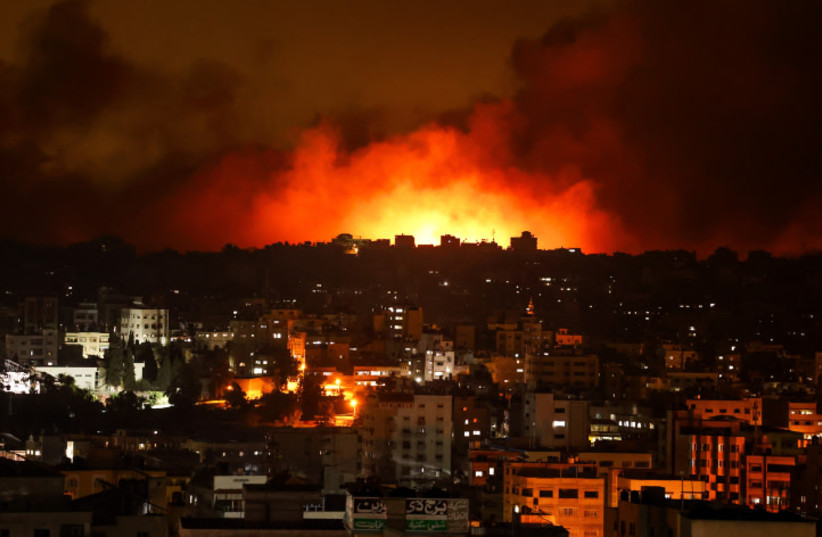New details about the assassination of Hamas's deputy head of the political bureau, Saleh al-Arouri, were published on Wednesday by Ynet.
"Israel fired six guided missiles, four exploded. Two of them destroyed two floors and directly hit the Hamas meeting room," a Lebanese security official said, according to Ynet. "Each missile weighed 100 kilograms."
Ynet reported that the official said the assassination of Arouri was carried out by an Israeli fighter jet - not by an unmanned aerial vehicle (UAV) as reported previously by Arab media outlets. According to the official, the deputy of Ismail Haniyeh was killed by "guided missiles" fired from an Israeli fighter jet in the Dahiyeh quarter in the southern suburbs of Beirut.
"These types of missiles are used by Israeli fighter jets," the security official claimed. Additionally, he mentioned that the Lebanese army found remnants of the missiles matching missiles previously fired by Israel in southern Lebanon.
The official Lebanese news agency, ANI, reported that the attack, the first of its kind in Beirut since the outbreak of the war, was carried out by a UAV, but the Lebanese security source, who was informed of the details in the initial investigation of the assassination contradicted this information.
Arouri was not only Hamas member killed
Along with Arouri, six other Hamas members, some of them senior, were killed in the attack on the offices of the terrorist organization in an area considered to be a Hezbollah stronghold in the Lebanese capital. This attack was also attributed to Israel.

Israel did not take responsibility for the attack, but IDF spokesman Lt. Col. Daniel Hagari said yesterday evening that the army is "prepared for any scenario." After the assassination, Hezbollah said that "the assassination will not go unpunished," and Lebanese Prime Minister Najib Mikati blamed Israel for the "desire to drag Lebanon into a new stage in the conflict."
Ynet reported that over 165 people have died in Lebanon since the outbreak of the war on October 7, most of them Hezbollah terrorists - but also more than 20 civilians, including three journalists. In Israel, nine soldiers and five civilians have died as a result of firing from the Lebanon border.
According to the military wing of Hamas, Arouri was the architect of the "Al-Aqsa Flood" - the name Hamas gave to the October 7 massacre. In the past, he served a 15-year sentence in Israeli prisons and was deported from the country after his release. He wandered through various Muslim countries until he arrived in Lebanon, where he was assassinated.
Arouri, 57, was reportedly the deputy to Ismail Haniyeh, the head of Hamas' political bureau, and was responsible for the military activities of the terror organization in the West Bank. One of the attacks orchestrated under Arouri's command was the kidnapping and murder of the three teenagers - Gil-Ad Shaer, Naftali Fraenkel, and Eyal Yifrah - in the summer of 2014, which led to the start of Operation Protective Edge in Gaza. Following the teenagers' murder, Israel demolished Arouri's family home.
Approximately two months ago, the IDF demolished the home of Arouri. Afterward, they placed a sign with a half-Hamas, half-ISIS flag with the inscription "Hamas = ISIS" in Arabic on the ruins. Security forces seized control of his house and used it for about a week and a half until the commander of the Central Command, Yoav Mordechai, signed an order for its closure and demolition.
The house, in the town of Ara'rah near Ramallah, reportedly became a "military facility," according to Palestinian reports. A sign was hung on the front of the building depicting Arouri alongside an Israeli flag in the background, next to an inscription in Arabic, stating: "Here was the home of Saleh al-Arouri, demolished by the Shin Bet."
